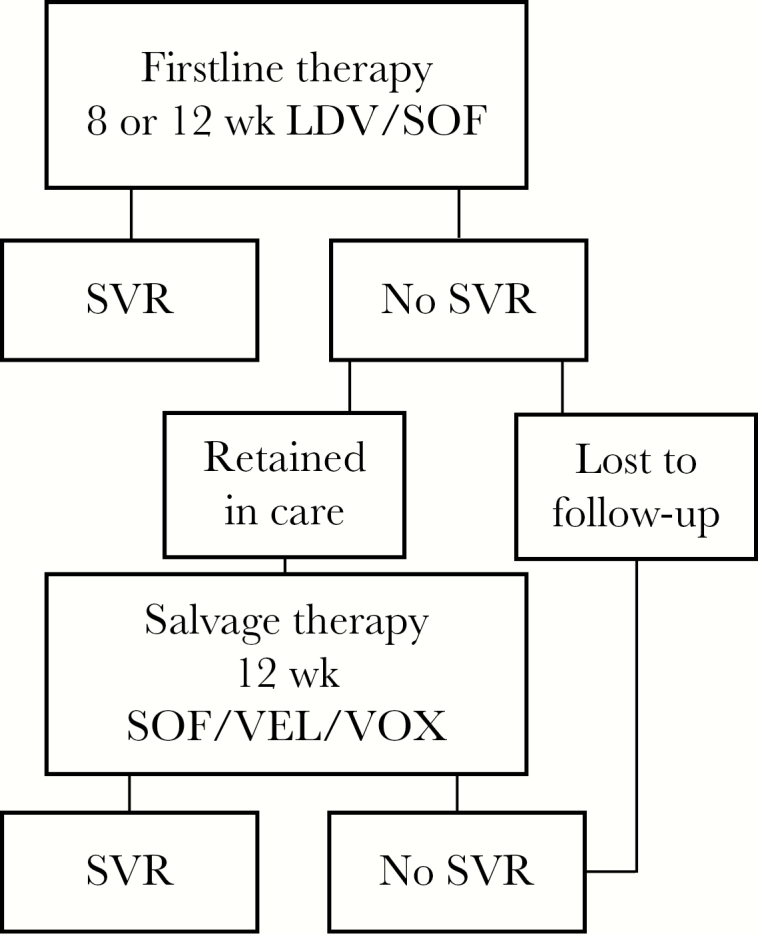Figure 1.

Decision tree evaluating 8-week vs 12-week therapy for HCV. Figure 1 is a schematic of our model. All individuals begin the analysis ready for treatment. Following firstline therapy, individuals’ chance of attaining SVR is based on the efficacy of the firstline regimen. Among those failing to achieve SVR, they are either retained in care or lost to follow-up. Those lost to follow-up never achieve SVR. Those retained are treated with salvage therapy and attain SVR with a probability equal to the efficacy of the salvage therapy. At the end of each branch (SVR or no SVR), lifetime cost and QALY outcomes are calculated via the HEP-CE model. Abbreviations: HCV, hepatitis C virus; HEP-CE, Hepatitis C Cost-Effectiveness Model; QALY, quality-adjusted life-year; SVR, sustained virologic response.
